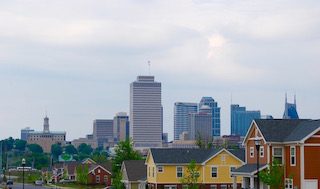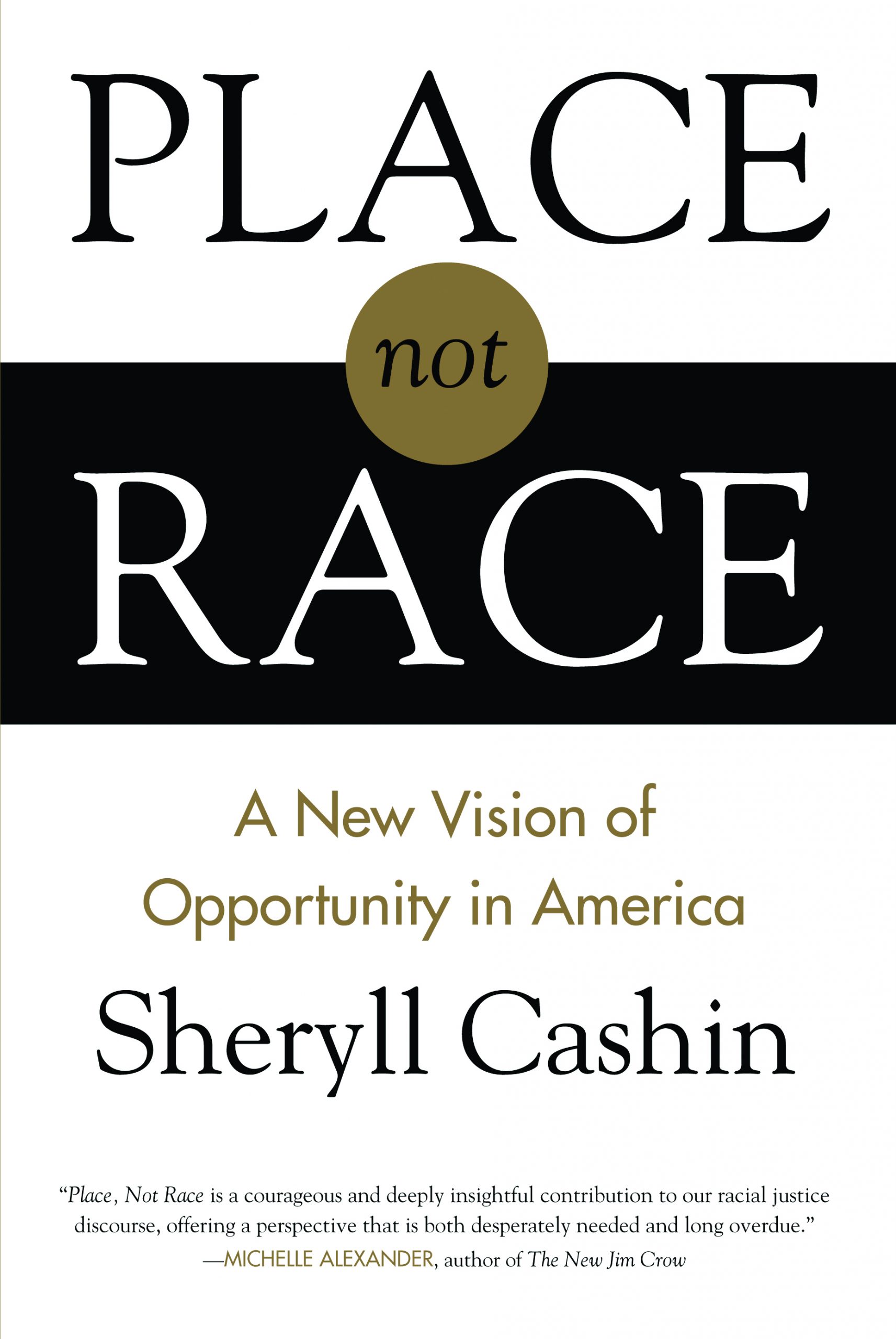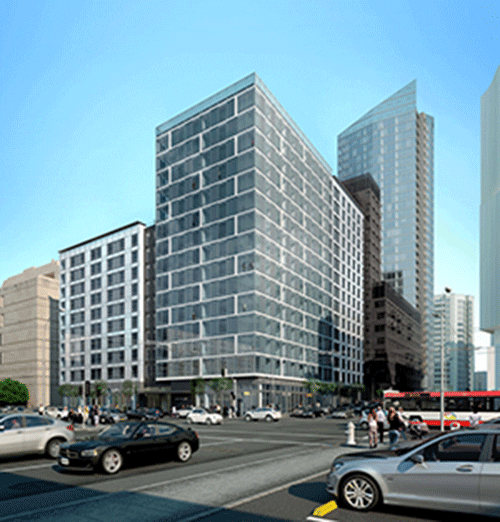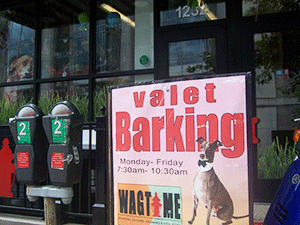
The John Henry Hale Homes development in Nashville, Tennessee. Photo courtesy of James Fraser
Proponents of mixed-income development almost always situate it as a strategy to improve the life opportunities of marginalized populations. While there is no doubt that improved housing and neighborhood conditions provide some benefits, the reduction of subsidized housing units and displacement of thousands of public housing residents is a high cost to pay. This is especially disconcerting given the affordable housing crisis that many cities in the United States are experiencing. In fact, some critics have suggested that “mixed-income” is really code for gentrification, as virtually all of these efforts are focused on bringing more affluent people to impoverished areas.
Still, a socioeconomic mix may be desirable because, as James DeFilippis and James Fraser suggest in a 2010 Critical Urban Studies article, class-segregated neighborhoods lead to class-segregated public spaces, schools, public services, and amenities, and “class-segregation is a fundamental barrier to urban democracy and social justice.” They contend that “democracy requires recognition of the existence of a mutually shared society.”
If social inclusion and the creation of mixed-income neighborhoods is embraced by so many, why does it seem to be so difficult to materialize this vision for the city?
The Forces of Economic Segregation
Let’s look at the example of Nashville, Tennessee. Between 2010 and 2015, rental prices across Nashville increased on average 25 percent. Neighborhoods surrounding the city center have experienced increases ranging from 11 to 56 percent. Home values in Davidson County have seen a mean five-year increase of 33 percent after minimal decreases during the Great Recession. Home prices in those same central city neighborhoods have increased 25 to 75 percent. Incomes, on the other hand, have changed only 10 percent over the past five years. Homelessness is also increasing, after several years of decline.
The large increases in housing prices in Nashville are driven in part by a mismatch of supply and demand, as many people flock to the city’s booming economy and its status rises as a destination city. These patterns are not unique to Nashville. For many years, housing prices have been increasing far more rapidly than either general inflation or incomes in a handful of large cities, primarily in the U.S. coastal states. More recently, those same patterns have been occurring, if at a slightly slower pace, in many more cities, including smaller cities across the South and Midwest.
These changes are driven by several factors. Historically low interest rates make it inexpensive to borrow money to buy a home or to invest in speculative “income properties.” The widespread emergence of short-term rentals means investors are buying up single-family homes and condo units to rent out on the tourist market, further squeezing supplies. Volatile stock markets and corporate profits mean that real property and housing are seen as more attractive investments than they might once have been.
In Nashville, at least, there are also other factors at play. We conducted an analysis of residential building permits constructed since 2013. They reveal that the construction of new housing stock is aimed primarily at people with high socioeconomic status. Over half of the multifamily developments built since the Great Recession in Nashville market themselves as “luxury apartments.” They come with saltwater swimming pools, facilities to groom pets, party rooms, and on-site gyms, all of which drive up monthly rental costs. Similarly, single-family home construction has been oriented toward the top of the market, with an emphasis on large square footage homes with gourmet kitchens and the like.
Under these conditions, gentrifying neighborhoods have a difficult time maintaining their income and racial/ethnic mix. Sometimes longtime homeowners are squeezed out by the rising property taxes that come with higher property values. In certain situations they choose to take equity from their appreciating home and move elsewhere. Longtime renters often have fewer choices than homeowners. Landlords raise rents as the desirability of the neighborhood increases (laws in Tennessee forbid any type of government-mandated rent control), and people move to find more affordable options. In addition, many of the smaller rental homes and duplexes in Nashville’s central neighborhoods are being purchased by speculators to “flip” for a profit or to demolish the original unit in order to build multiple, more expensive units on the same lot.
In addition, new residents, and especially those who have bought expensive homes, tend to be more active in neighborhood affairs, organizing and participating in neighborhood groups and petitioning government officials to address crime and property code violations. As a result, longtime residents feel increasingly marginalized in their own neighborhoods and find it more difficult to retain a positive sense of place.
Choices by developers to build for higher status groups and by neighbors to work aggressively to improve neighborhood life are, from the perspective of individual economic prosperity, entirely rational. Builders make more money when selling a home with granite countertops and an en-suite bathroom for every bedroom. Property management companies bring in more rent per square foot when they can offer amenities like dog-washing stations and clubrooms. Neighbors who aggressively police their neighbors often are motivated by maintaining or improving their property values, often in the face of considerable mortgage debt.
While the behavior of developers and neighbors makes perfect sense in terms of assuring their own individual prospects and profit, in the aggregate these choices and behaviors come with many social costs. Housing becomes more expensive relative to incomes, and affordability is an increasingly significant concern, even for households with relatively good incomes. Homelessness increases. People are displaced from their neighborhoods. Finally, neighborhoods are rapidly changing, tending toward economic and racial homogenization in favor of white, middle- and upper-income households. There is, in both a literal and figurative sense, less room for poor and lower-income residents in Nashville.
Nashville has been belatedly exploring new policies and programs to promote affordable housing and diversity throughout the city. Recently a new general land use plan has been adopted to promote mixed-income neighborhoods. As the severity of the city’s affordable housing challenge has become apparent, the city government has established an affordable housing trust fund, but it has limited dedicated funding and can do little with the funding it does have. The government has also considered an inclusionary zoning (IZ) requirement for new development, but state laws prohibiting rent control means that mandatory IZ can only be applied to ownership units, and it is unclear where funds to incentivize private developers to voluntarily embrace mixed-income developments and neighborhoods will come from.
Too Little, Too Late
These and other mixed-income housing policies and programs to promote affordability are merely ameliorative—that is, they do little to change the underlying conditions that have led to this situation. The efforts of city government to promote more affordable housing and mixed-income neighborhoods are being outflanked by developers who appeal to state government to overrule potential changes. Moreover, affordable and mixed-income housing policies are attempts to mitigate, on a very small scale, housing affordability and neighborhood segregation crises. In the current political economy of housing, maintaining housing as affordable and neighborhoods as mixed-income requires constant, costly intervention. Even then, the effect will likely be small, vastly insufficient to meeting burgeoning need. Clearly, in Nashville and in similar cities across the country, we need another solution.
Housing policies alone will not solve the social problems that beset society. That will take measures to equitably redistribute the surplus value created by labor. In a 2013 piece in Cityscape we wrote:
Mixed-income housing approaches to poverty alleviation and neighborhood redevelopment are conservative approaches that do little to address the broader structural conditions under which many working people still do not earn enough money to make autonomous choices about important aspects of their lives or to meet basic needs. . . . [To solve this problem] we raise the possibility of a more wholesale re-visioning of housing and work that might be achieved through a combination of three significant changes: a living wage, a guaranteed income, and adequate provision of affordable housing.
In the few years since we wrote that paragraph, it has become apparent that a re-visioning of the nature of housing and work is critical to fixing Nashville’s and America’s housing crisis. Implementing some version of a living wage and/or guaranteed minimum income will go some distance toward a solution. But “adequate provision of affordable housing” seems hopelessly nearsighted as a strategy now, as government provision of affordable housing, or even incentivizing the private sector to provide more affordable housing, will not fix the problems that are leading to the housing crisis.
Housing is necessary for life and for well-being. We must prioritize its use-value over its exchange-value while committing to providing decent, safe, affordable housing as human right. At a very basic level, government can continue to backstop and expand provision of housing for the very poor through shelters, transitional housing, public housing, and housing vouchers. However, if we want to create cities that are socially, racially, and economically integrated while providing opportunities for everyone, then we need alternatives to the forms of capitalism that maximize individual profit while ignoring social and economic costs. Property rights will need to value communal benefit over individual interest, for without embracing this change, we will continue to reproduce class and race segregation and inequality.






The flip side to gentrification – those doing housing development in low-cost, low-income neighborhoods are forced to use funding sources that preclude them from marketing to middle-income families. Thus, those neighborhoods remain economically, and generally racially, segregated. These funding streams, usually originating at HUD, I believe are discriminatory and should be found to be illegal.
While I agree that a living wage and guaranteed income are admirable goals, I don’t expect the cavalry to arrive anytime soon. The alternative, at least in some markets, is to help low-income families live well within their means while at the same time allowing for diversification of their low cost neighborhoods.